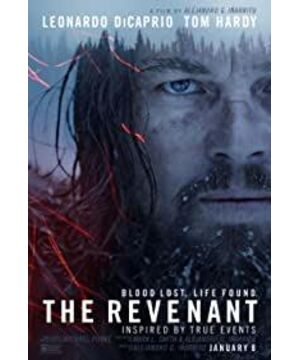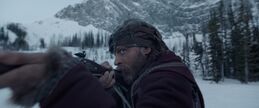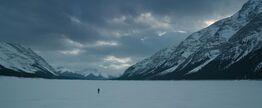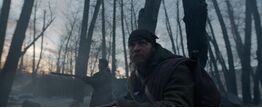The vast Rocky Mountains are simple and solemn. At the beginning of the film, it is as if a grand narrative scroll is opened, and the black pine and the white snow are confronting each other under the wide-angle and panoramic lens. Suddenly, a sharp arrow pierced the icy air, and the cold blood could almost be smelled in front of the screen.
Gonzalez should be a person who knows how to tell stories. At the beginning of the film, a dramatic conflict was created, narrating the encounter between fur merchants and Indians, and quickly confessed several main story characters.
Then, the defeat and escape are logical, the language of the camera is concise, and the plot is fully explained. Immediately afterwards, another dramatic conflict is also one of the main conflicts in the film-the male protagonist and the brown bear's hand-to-hand combat, and the long shots are completed in one go. The film is here, no matter the lens expressiveness, narrative method, and conflict setting are undoubtedly successful. Especially after the male protagonist was injured, the elevation shot appeared several times, and the branches of the fir (poplar?) pierced into the sky shaking and spinning, like the tall and upright god summoning a helpless dying soul. The lens cleverly connects nature, religion, and the fragile soul and the human's near-death feeling, which is extremely tense and profound.
With the further development of the plot, the male protagonist is injured and abandoned, the child is killed, the wilderness survives, and finally revenge. . . . . . Under the main frame of the story, the thin structure gradually appears. First of all, the lens language seems to show more natural beauty, while the selflessness and cruelty of nature, the opposition and coexistence of man and nature, these contradictions have not been effectively explored.
Moreover, since the story is placed in the historical background of conflict with Indian tribes, there should be more places to be expressed and sublimated, but the film itself is almost interpreted as a wilderness survival textbook. The signs of the male protagonist's exertion are also obvious, but there is always such a thin layer of psychological resonance. We follow the plot to be nervous, follow the plot to worry, follow the plot to pray or rejoice. . . . . . But we are always calm, breathing without being suppressed to the point of suffocation, anger without blood, or sorrow and tears. We just watched the scenes in peace, just like the old and silent land.
View more about The Revenant reviews











